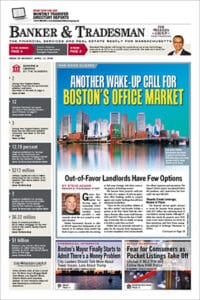
Many housing projects are staying on the drawing boards in Boston. Developers say this is partly due to city policies that pile costs on top of the tough financing environment. iStock illustration
Things are going from bad to worse when it comes to the housing crisis in Boston.
Once the region’s leader in the construction of new condominiums, apartments and homes, the Hub is poised to see another big drop this year in the number of building permits issued.
Developers pulled building permits for just 82 new units in all of September and October, the worst fall showing in at least nearly a decade, a review of city permit numbers shows.
Overall, the city is on track to see fewer than 2,000 new housing units built in 2024, a decline from even last year’s abysmal numbers.
And it is far below the more than 3,800 units permitted back in 2022, as the city’s decades long building boom drew to a close.
Those numbers, in turn, mask a deep decline in new market-rate housing. If it were not for the revamp and expansion of public housing complexes and other subsidized units, the declines would be even steeper.
What’s Dragging Down Housing?
So, what’s keeping plans for new housing stuck on the drawing boards?
Certainly, the Fed’s two-year long campaign to hike interest rates and rein in inflation, which is just starting to reverse, has played a big role.
Ditto for construction costs, which, already high in the Boston area, skyrocketed after the pandemic hit and the supply chain meltdown, and have yet to come back to earth.
But also squarely to blame, say developers and others involved in the construction and real estate are the Wu administration’s tough new affordability requirements and attempts to ban on fossil fuels in new buildings – which include the state’s new “stretch” energy code.
Developers are already struggling to get projects to pencil out in cities without these added costs.
Despite strong pushback over the past two years, the Wu administration finally went ahead last month and raised to 17 percent the amount of money-losing, subsidized units developers are required to include in each new project.
“Anecdotally, I can say that there are a lot of people sitting on the sidelines for now, waiting for the rate and input cost environment to improve,” said Chris Lehman, co-founder of real estate investment, development and management company Groma.
“At least for new market-rate development, the combination of these broader economic factors and the city’s affordability requirements is enough to make a meaningful percentage of projects non-viable,” he added.

Scott Van Voorhis
High Affordability Targets’ Bad Track Record
In fact, the track record of cities that have raised their affordability requirements into the 20 percent range is not a good one, with Cambridge and Somerville both having seen a drop-off in new construction.
Also faced with anemic housing construction, San Francisco last year lowered its affordability requirement from 21.5 percent down to the 12 percent to 16 percent range, according to The Real Deal.
The city also cut 20 different building fees as well.
Mike Monahan knows a thing or two about development as a former member of the Boston Planning & Development Agency board of directors and as an IBEW international vice president who oversees all the electrician union’s New England locals.
In discussions with developers trying to get plans for new housing off the ground, the city’s affordability requirements and its ban on fossil fuels in new buildings often come up, he said.
Monahan thinks that the Wu administration should look at what San Franciso is now doing.
“Boston should take a page out of San Francisco to adapt to market conditions to jump start construction,” Monahan said.
That said, Ted Tye, managing partner and co-founder of National Development, sees signs that development officials at Boston City Hall are listening.
“The city has indicated a willingness to consider any reasonable offer that would advance housing starts, so that’s a positive,” Tye said.
Scott Van Voorhis is Banker & Tradesman’s columnist and publisher of the Contrarian Boston newsletter; opinions expressed are his own. He may be reached at sbvanvoorhis@hotmail.com.






